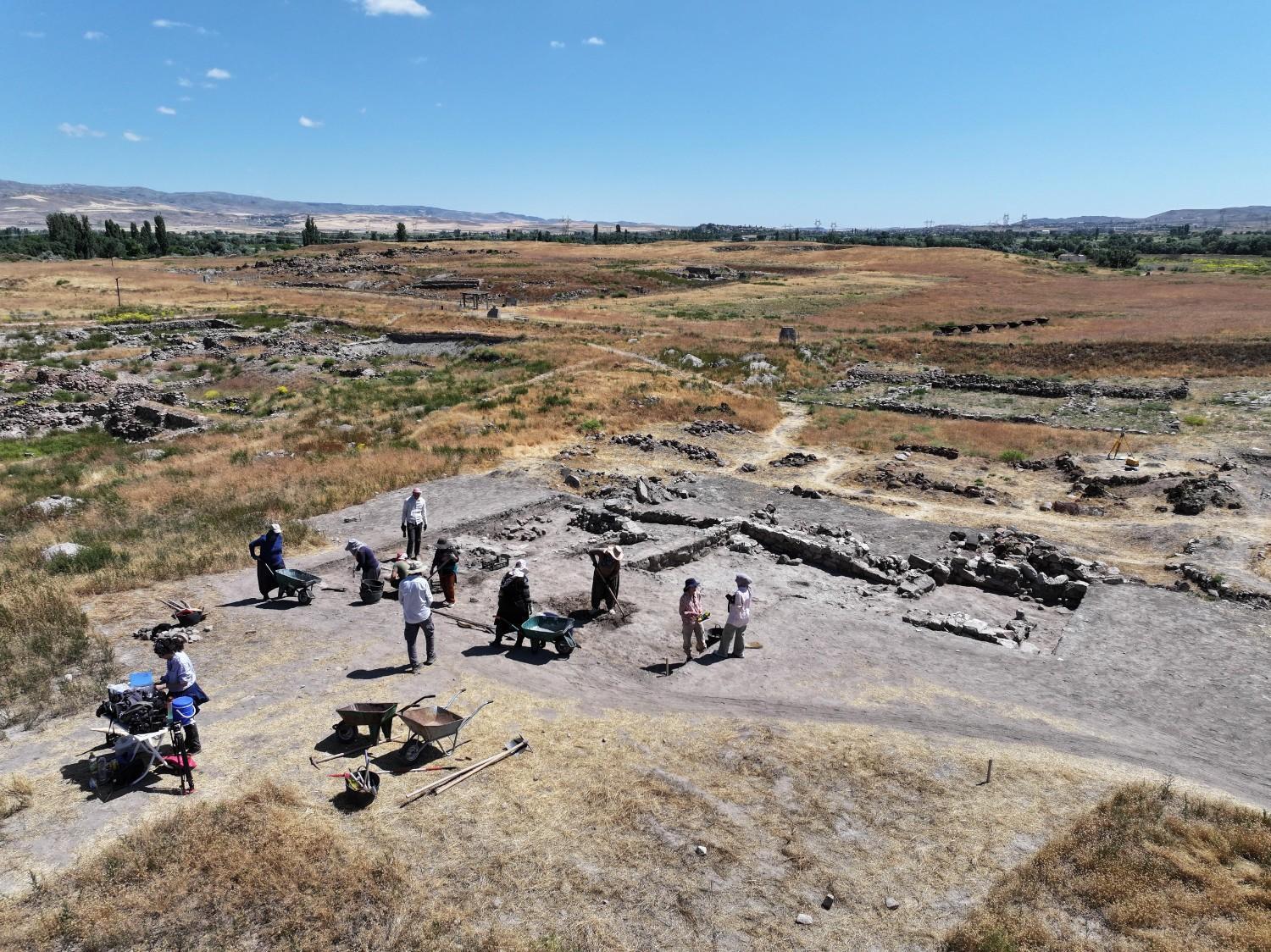
Joint efforts of Turkish and international scholars in the archaeological excavations at the Kültepe Kaniş-Karum mound in the Central Anatolian province of Kayseri are shedding light on Anatolian and world history.
Located 20 kilometers northeast of the Kayseri city center, the site has drawn experts from 25 countries, including South Korea, Japan, the United States, Italy, Greece and Australia, who work together across disciplines to uncover the region’s ancient heritage.
First excavated in 1948 by the renowned Turkish archaeologist Tahsin Özgüç, the site is now overseen by Professor Fikri Kulakoğlu from Ankara University.
The significance of the site clearly extends beyond Anatolia, Kulakoğlu emphasized, holding valuable insights for the broader narrative of human history. Given the interdisciplinary nature of the research, he noted that international collaboration is essential.
Reflecting the global academic interest in Anatolian archaeology, experts from universities, institutes and research centers around the world are involved in the excavation efforts.
“The richness we uncover at Kültepe must be revealed through teamwork — balancing cooperation with healthy academic competition,” he added.
In recent years, increased collaboration with East Asian institutions has marked a new chapter in the site’s history. “We’ve developed strong ties with institutions in the Far East,” Kulakoğlu said.
Notably, South Korea’s National Research Institute of Cultural Heritage has signed a protocol with the Turkish Culture and Tourism Ministry and Ankara University, sending teams to Kültepe to conduct fieldwork aligned with Turkish researchers’ key questions.
Plans are underway to establish a joint laboratory that would further scientific analysis and deepen collaboration.
Japan has also maintained a long-standing involvement in the site. “We’ve been working for years with colleagues from Okayama and Tokyo Universities,” Kulakoğlu stated.
Australia, too, has contributed a specialized team focusing on ancient plant remains, offering critical insights into the region’s environmental and agricultural history.
“Among the most fruitful places to work in Turkish archaeology, Kültepe certainly stands out,” Kulakoğlu said. “Our scientific team includes members from 25 countries. Some join independently, bringing their expertise in various subfields of archaeology.”
One such international contributor is archaeologist Michael Campesei from the University of Milan, who has been working at the site since 2021. Under the leadership of Professor Luca Peyronel and in partnership with Kulakoğlu, the Italian team is focusing on understanding the chronological and architectural development of layers dating back to the second millennium B.C.E.
Campesei, who previously took part in excavations at Karkamış in the southern province of Gaziantep, explained that their multidisciplinary team also includes doctoral students, archaeozoologists and paleobotanists. Their research explores how ancient peoples lived and what they consumed.
As excavations continue, Kültepe remains a vibrant, globally connected research site as one of Anatolia’s most vital windows into early civilization.